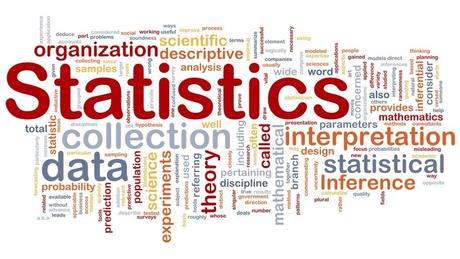As the 2016 election season begins in earnest, and the presidential candidates start flooding the media with numerous facts bolstering their political positions, it would be wise for voters to remember this humorous observation made by Mark Twain noting the tendency politicians have to distort facts to their liking.
Mark Twain also used the famous phrase – “There are three types of lies: Lies, Damn Lies and Statistics” to describe how statistics are often used to persuade people to believe weak arguments.
Statistics can be powerful when properly applied – simplifying complex data, identifying trends and providing answers to questions that would be otherwise unknowable. Statistics can be improperly applied and misused too – becoming a dangerous mechanism for unscrupulous actors to mislead people for their own personal or political gain.

That is why, as consumers of statistical information, it is important for us to question the validity of statistical data and to insist that the sources of the data explain how the data was derived. There are websites like Politifact and the Washington Post’s Truth Tracker that provide a valuable public service by evaluating statistical claims made by the candidates and reporting on the credibility of their statements.
However, these non-partisan websites should not be a substitute for our own self examination to decide whether or not the facts presented to us should be believed. A good life skill to acquire is the ability to examine the facts presented to us and objectively evaluate the validity of the claim.
In the book “Flaws and Fallacies in Statistical Thinking”, Stephen K. Campbell writes that we should ask ourselves five questions whenever we are presented with a statistical fact before we accept it as trustworthy.
QUESTIONS:
- What kind of reputation does the source of the fact enjoy as a supplier or as an authority on the relevant subject? If the source of the data is not a widely recognized authority with a history of providing accurate data then the validity of the fact should be questioned.
- Does the supplier of the fact have an “axe to grind”? The fact may be tainted by the effects of intentional and unintentional bias based on racial or religious bigotry or bias based on the desire to sell an idea or commodity. Be skeptical of estimates from sources that have “axes to grind”. Make the source work hard to convince you that their facts are trustworthy.
- What supporting evidence is offered? When evidence is offered, ask yourself whether it does in fact support the estimates or whether it has been artificially created merely for the sake of making a good impression.
- Does the underlying methodology behind the statistical facts seem reasonable or are they based on questionable assumptions? Beware of facts based on eccentric theories or from a buildup of previous dubious facts.
- Do estimates appear plausible? Sometimes common sense and just a little knowledge about the relevant subject is all that is required to strip worthless estimates of their respectable facades.
If you ask yourself these questions and still are not sure whether a fact has merits, it is better to doubt the accuracy of the fact than to believe it.
Both Republicans and Democrats have historically played fast and loose with their statistical facts and both parties are guilty of doctoring statistics to gain political advantage. For example, I have examined two statistical facts below, one presented by Donald Trump and one presented by Hillary Clinton to see if the facts would pass the trustworthy test questions recommended by Stephen Campbell.
- Trump said that “Homicides last year increased by 17 percent in America’s 50 largest cities. That’s the largest increase in 25 years.”
The data for this statistic does come from a reputable source, The Washington Post; but Trump makes the situation appear more dire than it actually is by cherry picking the data to only select cities that had a rising homicide rates – failing to mention that the overall crime rate for the country as a whole has been declining since the late 90’s. This statistic would fail Campbell’s third question because it was artificially created for the sake of making a good impression.
- Clinton said that “About 1 percent of all gun sellers are responsible for more than half of the guns that are used in crimes”.
There is some truth to this claim. The source of the data is a 2000 report on 1998 gun tracing data produced by the Federal Bureau of Alcohol, Tobacco and Firearms. However, it would be fair to question if this fact from the year 1998 is still valid 18 years later in 2016. It would be impossible to validate this fact today because Congress passed a law in 2003 that forbids the ATF from reporting gun related statistics. This statistic would likely fail Campbell’s fourth question because it is based on a buildup of previous facts that may no longer be valid.
So good luck wading through the avalanche of data and statistics that will be unleashed on the American public over the next three months – and whenever you hear a new statistic it would be good to be skeptical like our former president Ronald Reagan when he advised “Trust but Verify”.

Leave a comment